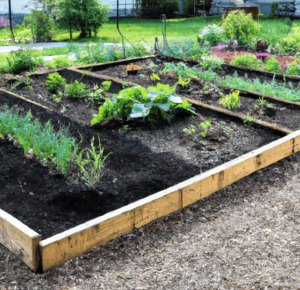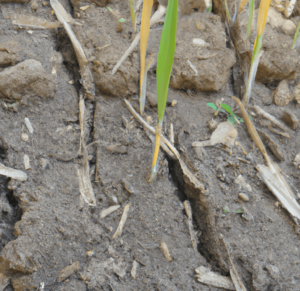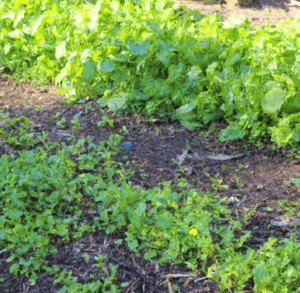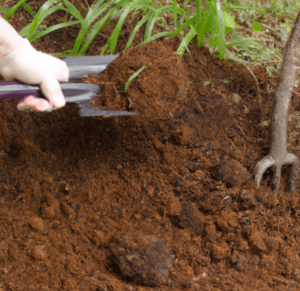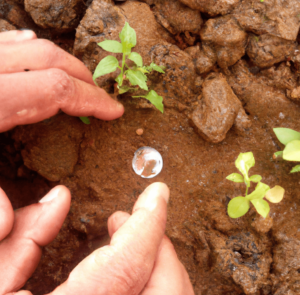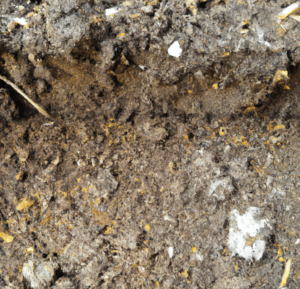The arrangement and organization of soil particles, including sand, silt, and clay, into aggregates or clumps, is referred to as soil structure. This configuration alters the interactions between soil, air, water, and plant roots, which in turn impacts plant growth and health.
Understanding soil structure and its importance in plant growth is crucial for gardeners, farmers, and landscapers. This leads to a better understanding of their plants, flowers, shrubs, trees, vegetables, or herbs. That’s why we’ve put together this complete gardening guide on the subject!
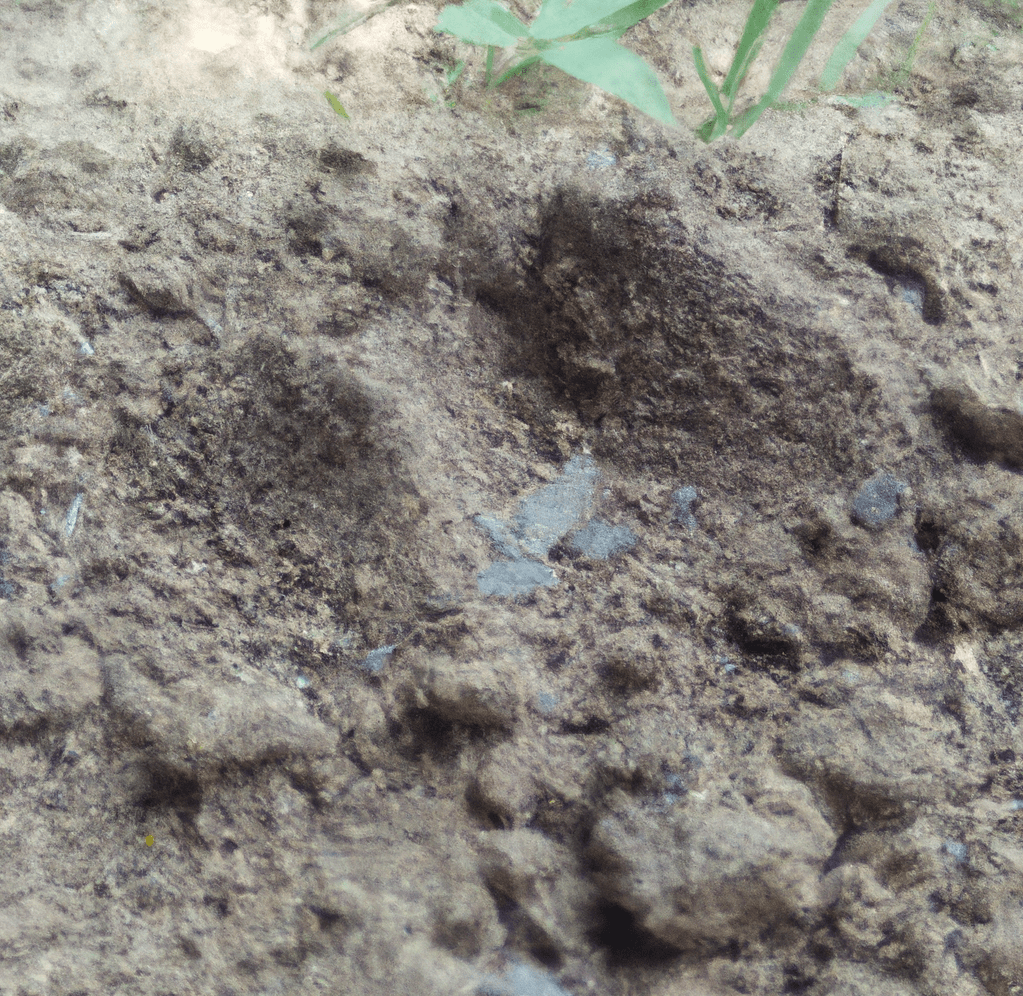
Understanding soil structure and its importance in plant growth: The Components of Soil Structure
The key to understanding soil structure and its importance in plant growth is understanding the soil itself:
- Fertilizer: For healthy plant growth, the soil must contain adequate levels of crucial nutrients including nitrogen, phosphorus, and potassium. By encouraging root growth and soil aggregation, fertilizer can aid in the provision of essential nutrients to the soil and enhance soil structure.
- Strong and wide root systems are essential for plant growth because they aid in securing the plant in the ground, assist the plant to absorb water and nutrients, and increase the porosity of the soil. By encouraging the development of soil aggregates, root systems also aid in improving soil structure.
- Structure: The arrangement of individual soil particles into more substantial units known as aggregates is referred to as soil structure. Proper air and water circulation in the soil, both of which are necessary for healthy plant growth, depending on the structure of the soil.
- Water: Enough water is necessary for plant growth, and the structure of the soil is key to the retention and circulation of water in the soil. Better water retention and infiltration are characteristics of well-structured soils, both of which are necessary for the growth of healthy plants.
- Plant Health and Growth: The availability of water and nutrients, the development of roots, and the stability of the soil all depend on the health and growth of the plants. While poor soil structure can restrict plant growth and eventually cause soil deterioration, good soil structure can aid in promoting healthy plant growth.
Understanding soil structure and its importance in plant growth are understanding its significant impact on root development, water and nutrient availability, and soil stability.
The Different Components That Makeup Soil Structure, Including Soil Particles, Pores, and Organic Matter
The arrangement of soil particles, pores, and organic materials that make up the top layer of the earth’s surface is referred to as soil structure:
- Sand, silt, and clay are all types of soil particles. The largest soil particles, sand, give the soil structure and aeration. The smallest particles are the clay, which is the tiniest and gives plants nutrients. Silt particles are smaller and aid in moisture retention.
- Pores are openings between soil particles that permit the movement of roots, air, and water. The quantity of water and air that plants have access to depends on the size and distribution of pores, and tillage techniques can alter the structure of pores.
- Dead plants and animals, as well as other organic materials, are an essential part of the structure of the soil. To understand the role of soil microbes in plant health, organic matter can help in the breakdown of organic matter and the recycling of nutrients, it fosters a healthy ecosystem and supplies nutrients to plants.
Now that you are understanding soil structure and its importance in plant growth, you know that increased crop productivity and the health of the ecosystem as a whole can result from proper tillage techniques and management.
How These Components Interact to Create a Healthy Soil Structure
Plant growth depends on a healthy soil structure, which is produced by the interplay of numerous elements. Plant root systems are essential for forming the structure of the soil. The soil is penetrated by the roots, improving the soil’s porosity and forming channels that improve aeration and water flow.
The type of plants that grow there has an effect on the soil’s composition as well. Different plant species have various root systems, and these root systems can have various effects on the soil’s structure. For instance, trees have deeper roots that help to anchor the soil and prevent erosion, whereas grasses tend to create a dense network of roots that aid in holding the soil together.
Understanding soil structure and its importance in plant growth aren’t complete without fertilizer. The appropriate kind and quantity of fertilizer can support the growth of healthy plants, which in turn can improve the structure of the soil. But adding too much fertilizer can harm the soil’s structure, causing compaction and a reduction in porosity.
Additionally essential to a healthy soil structure is organic matter. For example, the benefits of using worm composting in your garden include enhanced soil fertility and structure.
The Impact of Soil Structure on Plant Growth
Understanding soil structure and its importance in plant growth can be categorized into the following impacts:
- Water: Water holding capacity, infiltration, and drainage are all impacted by soil structure, and this directly affects plant development. Waterlogging and root anaerobiosis caused by poor soil structure can have a detrimental effect on plant growth and root development. A good soil structure, on the other hand, enables adequate water absorption and availability, fostering plant development and health.
- Chemical: The mobility of soil chemicals in the soil profile and the availability of chemical nutrients to plants are both influenced by soil structure. Chemical fertilizers can be distributed effectively and are more likely to be absorbed by plants when the soil structure is good.
- Fertilizer: The effectiveness of fertilization and the efficiency of nutrient uptake by plants are both impacted by soil structure. Nutrient availability to plants can be decreased by an unbalanced distribution of nutrients due to poor soil structure. On the other hand, a healthy soil structure encourages the correct distribution and absorption of nutrients, which supports the growth and health of plants.
- Biological: The growth and development of soil microbes, which are essential to plant nourishment, are influenced by soil structure. A healthy and diversified soil microbiome is supported by a good soil structure, which fosters plant development and health.
- Spatial: Root-soil interactions and root growth and function are influenced by soil structure. A healthy soil structure encourages the creation of widespread, deep roots, which can improve a plant’s ability to absorb nutrients and water, fostering plant growth.
Poor soil management can inhibit plant growth and negatively impact productivity, whereas proper management of soil structure can encourage plant growth and health
Discussion of How Soil Structure Affects Water and Nutrient Availability to Plants
Now that you’re understanding soil structure and its importance in plant growth, how does this play a role in water and nutrient availability? The voids in the soil create an environment for root development and permit the free flow of water and nutrients. The passage of water and nutrients can be impeded by poor soil structure, which is characterized by compacted or tightly packed soil particles. This may result in plants consuming fewer nutrients and water, which will slow their development and output.
The best conditions for plant growth are created by healthy soil structure, which has a balance of large and tiny spaces. This provides for efficient aeration, water drainage, and nutrient diffusion. Additionally, the amount of water retained in the soil is influenced by soil structure. While compacted soils have a limited ability to hold water, soils with adequate structure may hold water in bigger spaces, making them available to plants for extended periods of time. This implies that during dry spells, plants growing in compacted soils may incur water stress.
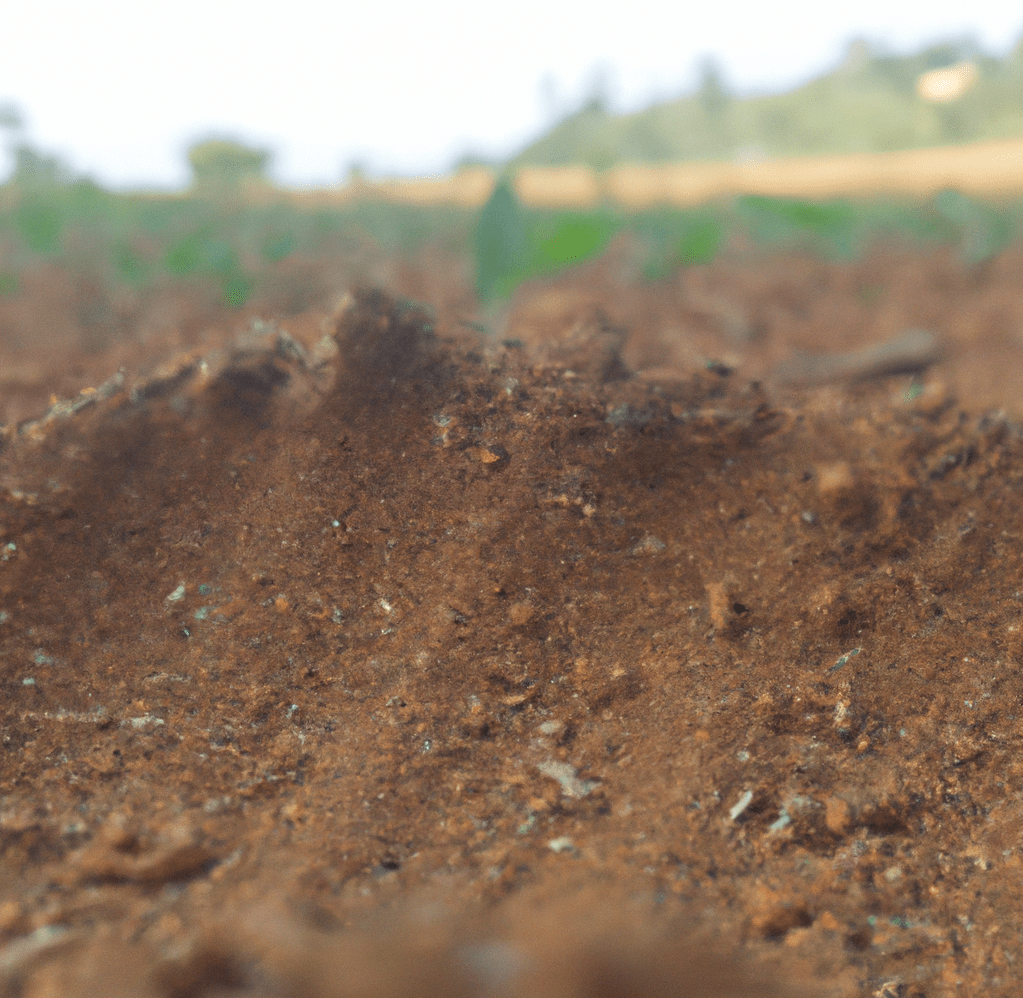
Explanation of How Soil Structure Affects the Growth and Development of Plant Roots
Plant root growth and development are greatly influenced by soil structure which is why understanding soil structure and its importance in plant growth is so important. Root penetration and nutrient absorption are both influenced by the kind of soil, its content, and its structure. This in turn has an impact on the plant’s general growth and well-being.
In order for plant roots to efficiently absorb water and crucial nutrients like fertilizer, the soil must have a porous structure. Root systems may be hampered if the soil is compacted or doesn’t have enough pore space, which would limit the plant’s capacity to absorb the nutrients it needs to flourish. Stunted growth or even plant death could occur from this.
Well-structured soil, on the other hand, offers plenty of room for root systems to spread out and collect water and nutrients. As a result, plants become stronger and more robust. This encourages healthy plant nutrition and development.
Factors That Can Negatively Impact Soil Structure
While understanding soil structure and its importance in plant growth can be easy, there are factors that can negatively impact your garden area. Unfortunately, a variety of human activities, such as the excessive use of pesticides, soil compaction, and erosion, can have a detrimental effect on soil structure:
- Chemical Overuse: Using pesticides, herbicides, and fertilizers in excess can harm soil’s biological inhabitants, especially earthworms and microbes. Reduced soil fertility, slower plant development, and a decline in the ecosystem’s general health can result from this.
- Heavy machinery, livestock grazing, and intense tillage can all result in soil compaction, which hinders plant roots’ ability to penetrate the soil. As a result, there may be less plant growth, less water infiltration, and more runoff and erosion.
- Erosion: When wind or water transport soil particles from one place and deposit them in another, erosion has taken place. This might cause the soil to become less fertile and degrade, which would diminish crop output. Increased runoff and sedimentation brought on by erosion can be detrimental to aquatic habitats.
How to Improve Soil Structure
Understanding soil structure and its importance in plant growth means that you can research a certain process to improve the everyday life of your plant or entire garden:
- Crop rotation is the practice of switching up the crops that are cultivated in a field each year. This aids in reducing the spread of pests and diseases, stopping soil erosion, and enhancing soil fertility.
- Planting a non-harvested crop, such as rye or clover, in between primary crops is known as cover cropping. By limiting erosion and incorporating nutrients through its root systems, the cover crop adds organic matter and strengthens soil structure.
- Increasing the amount of organic matter in the soil, such as compost or manure, adding organic matter can improve soil structure. This in turn can promote healthy soil microbial flora and increase the soil’s ability to retain water.
- Fertilizers might help to strengthen the structure of the soil on the earth. Proper fertilizer application can aid in maintaining soil pH while giving plants the nutrients they need to grow healthily and have better soil structure.
Importance of Soil Structure in Sustainable Agriculture
Sustainable agriculture depends heavily on the quality of the soil. Effective use of water, chemicals, and fertilization are made possible by a healthy soil structure, which promotes greater plant growth and higher yields. The biological activity required for soil health and fertility is promoted by the soil’s structure. The spatial organization of a soil’s elements is governed by its structure, which has an impact on root development and nutrient uptake.
How Soil Structure Plays a Role in Sustainable Agriculture Practices, Such As Agroforestry, Regenerative Agriculture and Conservation Agriculture
Sustainable agricultural techniques including agroforestry, regenerative agriculture, and conservation agriculture all heavily depend on the health of the soil which is why understanding soil structure and its importance in plant growth is crucial. The ability of soil to retain air, nutrients, and water-all necessary for plant growth is influenced by its structural makeup.
In addition to giving plant roots the room they need to expand, well-structured soil also allows water and air to flow easily. By contributing organic matter and broadening the variety of soil organisms, agroforestry systems, which include crops and trees, can enhance soil structure.
In regenerative agriculture, cover crops, composting, and minimal tillage are used to enhance soil structure. These techniques improve soil structure by increasing the amount of organic matter in the soil and encouraging the development of soil microorganisms.
By minimizing tillage and preserving a permanent soil cover, which guards the soil against erosion and aids in moisture retention, conservation agriculture also helps to maintain the structure of the soil. Crop rotation, which is incorporated into this method as well, aids in improving soil structure by lowering soil compaction and boosting the variety of soil organisms.
Bottom Line: Understanding Soil Structure and Its Importance in Plant Growth
Understanding soil structure and its importance in plant growth are more than information in an article because root systems, water availability, and nutrient uptake are directly impacted by the soil’s structure. Anyone wishing to produce wholesome landscapes, gardens, or farms must comprehend the significance of soil structure and how it affects plant growth.
FAQs on Understanding Soil Structure and Its Importance in Plant Growth
What does soil structure mean?
The arrangement and organization of soil particles, such as sand, silt, and clay, into aggregates or clumps is referred to as soil structure. This arrangement affects how soil, air, water, and plant roots interact, which in turn affects plant development and health.
Why is it vital to comprehend soil structure and the role it plays in plant growth?
Gardeners, farmers, and landscapers must comprehend soil structure and the role it plays in plant growth. By gaining a deeper comprehension of their plants, flowers, shrubs, trees, veggies, or herbs, they are better able to manage their soil and take care of their plants.
What elements make up the soil structure?
Organic matter, pores, and soil particles all make up the structure of soil. Pores are openings between soil particles that allow roots, air, and water to flow through. Soil particles include sand, silt, and clay. Dead plants and animals, as well as other organic material, are an important component of the soil’s structure that aids in the decomposition of organic waste and the recycling of nutrients.
How do these elements work together to form a sound soil structure?
A healthy soil structure is the result of the interaction between plant root systems, the kinds of plants growing there, fertilizer, and organic materials. Distinct plant species have different root systems that can change the structure of the soil, and plant roots penetrate the soil to increase its porosity and aeration. Healthy plant growth can be supported by the right type and amount of fertilizer, and organic materials, such worm composting, can improve the fertility and structure of the soil.
What effect does soil structure have on plant growth?
The intake of water, chemicals, and fertilizers are only a few of the ways that soil structure affects plant growth. The mobility of soil chemicals in the soil profile and the accessibility of chemical nutrients to plants are both impacted by soil structure, as are water holding capacity, infiltration, and drainage. The effectiveness of fertilization and the effectiveness of plant nutrient uptake are both reliant on soil structure.
Why is it crucial for farmers, gardeners, and landscape designers to comprehend soil structure and the role it plays in plant growth?
A deeper grasp of soil structure and the role it plays in plant growth on their property is advantageous for gardeners, farmers, and landscape designers since it helps them better comprehend the plants, flowers, shrubs, trees, vegetables, or herbs they grow. As a result, they are more equipped to manage the soil and take care of the plants, which increases crop yield and improves the ecosystem as a whole.


